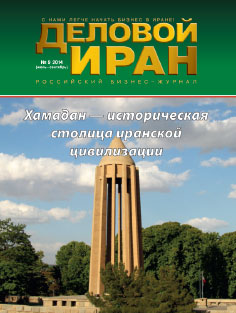Heterogeneous Catalytic Photooxidation Technology of HRS Oy.
|
Technologies for removal of pollutants are classified into separation techniques (coagulation, flotation, membrane, sorption) and destruction (oxidation, pyrolysis) techniques. Separation techniques separate the pollutants from the water. They must then be collected and subsequently disposed of, or subjected to destructive processing. Destructive techniques (of which ours is one) destroy pollutants entirely, or transform them into harmless substances. Destructive technologies are preferred. Of destructive technologies, oxidation processes involving ozone, hydrogen peroxide, and oxygen, are the most commonly used and safe. Techniques are currently being intensively developed for methods known as Advanced Oxidation Processes. These are primarily based on reactions involving free radicals in the following systems: - Non-irradiated homogeneous systems: О3/Н2О2 , О3/ОН- , Н2О2 /Fe2 (Fenton’s reagent); - Irradiated homogeneous systems: О3/UV, Н2О2/UV, О3/Н2О2/UV, photo Fenton, vacuum UV, electron beam; - Irradiated heterogeneous systems: TiO2/O2/UV; - Non-irradiated heterogeneous systems, known as electro-Fentons. - The majority of manufacturers are still in the testing stage for such systems. We began our work at the beginning of the 1990s, when even the term ‘advanced oxidation processes’ had not been introduced. It is known that simultaneously treating water with oxidisers (ozone, hydrogen peroxide) and UV radiation accelerates the oxidation rate of dissolved organic molecules by a factor of 100–10,000, with the effects of ozone and UV radiation having shown to be synergistic. Effective decomposition of the following organic water pollutants is achieved: - halohydrocabons (vinyl chloride, dichloroethane, trichloroethylene, perchloroethylene, chlorbenzol, chlorophenols, polychlorinated bifenyls); - aromatic (benzol, toluene, xylene, ethylbenzene); and - polycyclic (naphthalene, anthracene, pyrene, benz-a-pyrene) hydrocarbons; - herbicides (athrazene, propazene, bromazyle); - other hazardous compounds (phenols, alcohols, aldehydes, oils, fats, carboxylic acids, etc.) That is to say almost all organic water pollutants, including persistent organic pollutants (POPs) are decomposed. Generally, reactions reach complete mineralisation of organic compounds, while detoxication of a number of inorganic compounds (nitrites, cyanides, hydrazine, etc.) is also observed. We have succeeded in developing a new technology using О3/UV treatment by converting it into a heterogeneous catalytic process. It has been proven that using ozone excited by UV radiation in its absorption band maximum as an oxidiser (the so-called photolytic ozone treatment) makes it possible to develop installations that are 5-7 times more efficient in their power consumption than those that use hydrogen peroxide. To maximise purification efficiency, the reaction is conducted in a heterogeneous system of water and ozone-air. The optimum ratios between the rate of ozone injection into the system and the irradiation source power have been established. A running photochemical reactor featuring a thin water layer was designed and used for experimental testing of the capabilities of the photolytic ozone treatment technique on a number of simulated pollutants. The efficiency of the ozone treatment is considerably improved with photolytic techniques (even in the most primitive reactors ozone usage efficiency increases from 20% to 70%). Oxidation of organic molecules achieve complete mineralisation, while the contact time needed to oxidise and sterilise the system is reduced to only a few seconds compared with ozone treatment. It is prudent to note that, despite the newness of the technology, it can be implemented using standard mass produced and widely available industrial equipment. - A water purifying household appliance (OV-10) with a capacity of up to 30 l/hr. The instrument was certified by Gosstandart of the Russian Federation. When testing the appliance it was determined that the chemical oxygen demand is reduced insignificantly (due to the low dosage of ozone injected) while there is a strong depletion in the concentrations of poisonous (chloroorganic and organophosphorous) chemicals; depletion rates vary from several orders of magnitude, up to complete elimination (carbophos, rogor, hexachlorocyclohexane, DDT, DDD, DDE). - A mobile system for natural water decontamination and purification (SOOPV-2) including a MTsPT-5.5 cistern module, commissioned by the Russian Ministry of Defence. One of the test facilities underwent organisational testing and demonstrated its full adherence to SOW performance standards. It decontaminates and purifies water taken from natural sources with extremely high initial bacterial contamination (E.Coli index in excess of 1100) and meets the Russian SanPin 2.1.4.559-96 “Drinkable Water” standard. After testing the system has now been approved for mass production. UNIQUE FEATURES Compared to existing analogues (adsorption filtering and ozonation facilities) the installations we have developed provide the following principal advantages: • a high level of removal of contaminants (down to one part per trillion) and purification (depleting the concentrations of microbiological contaminants by a factor of at least one million), that are unattainable using other techniques; • low capital and operational expenses due to compact design, minimal metal content, and low power consumption. As early as 1996 the use of photochemical techniques for post-treatment of sewage was demonstrated, including the treatment of extremely polluted water at the Krasniy Bor toxic waste site in Russia. Direct standard processing of extremely polluted (turbid) water using the photolytic ozone treatment technique has proven to be ineffective. In order to treat such water we recommend a cleansing technology that includes initial flotation and coagulation stages. We use two-stage water purification, by first removing suspended particulate matter. Our installation combines technology for the oxidizing destruction of toxicants with photolytic ozone treatment in a heterogeneous catalytic system. At the final stage of purification the installation uses catalytically accelerated oxidation of residual contaminants dissolved in water by ozone on a surface of absorbent charcoal. A number of laboratory tests using water samples with initial COD values ranging from 70 to 550 mg О2/litre have demonstrated the suitability of the technique in removing persistent organic pollutants. Field tests of the pilot facility have confirmed the data obtained in the course of laboratory studies
|

 Загрузить PDF-версию № 11
Загрузить PDF-версию № 11
 Загрузить PDF-версию № 10
Загрузить PDF-версию № 10
 Загрузить PDF-версию № 9
Загрузить PDF-версию № 9